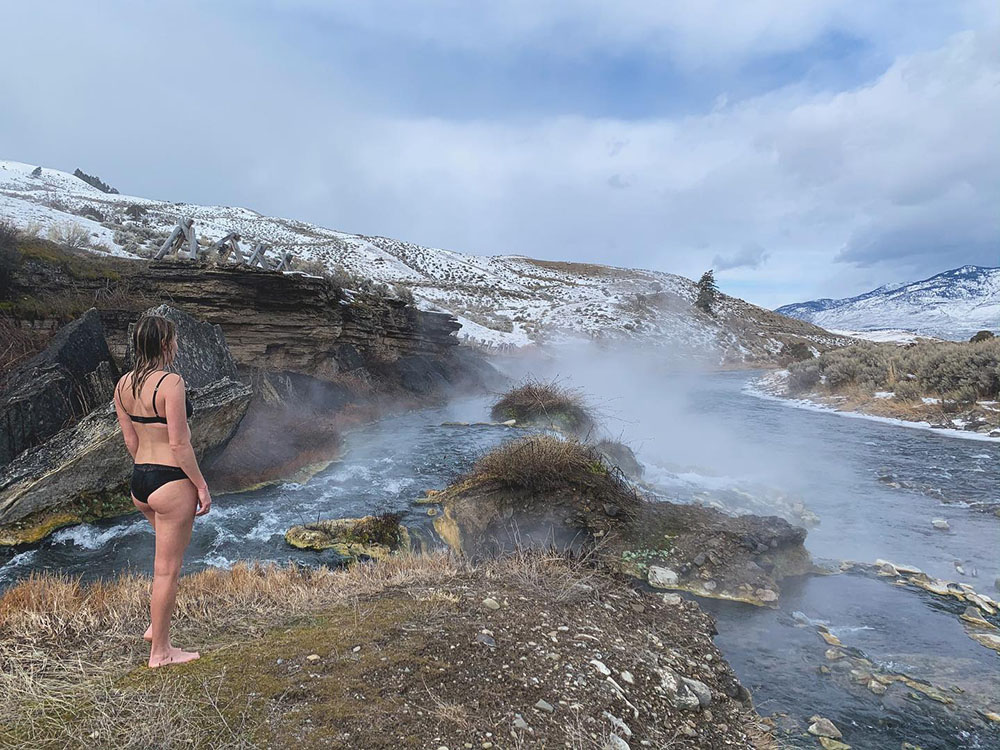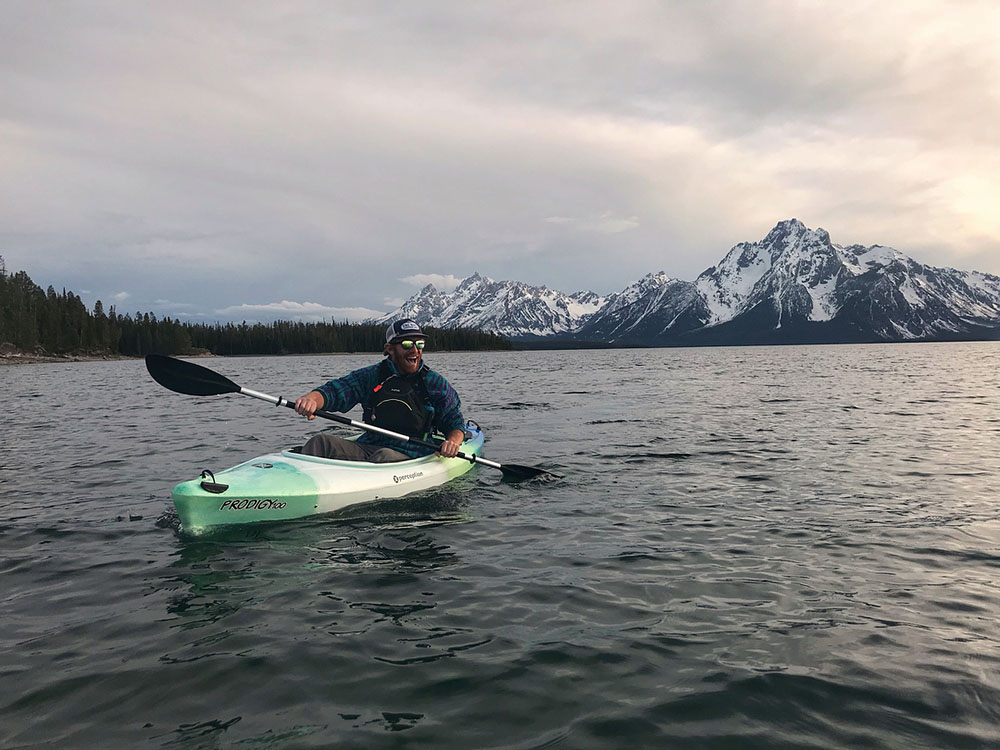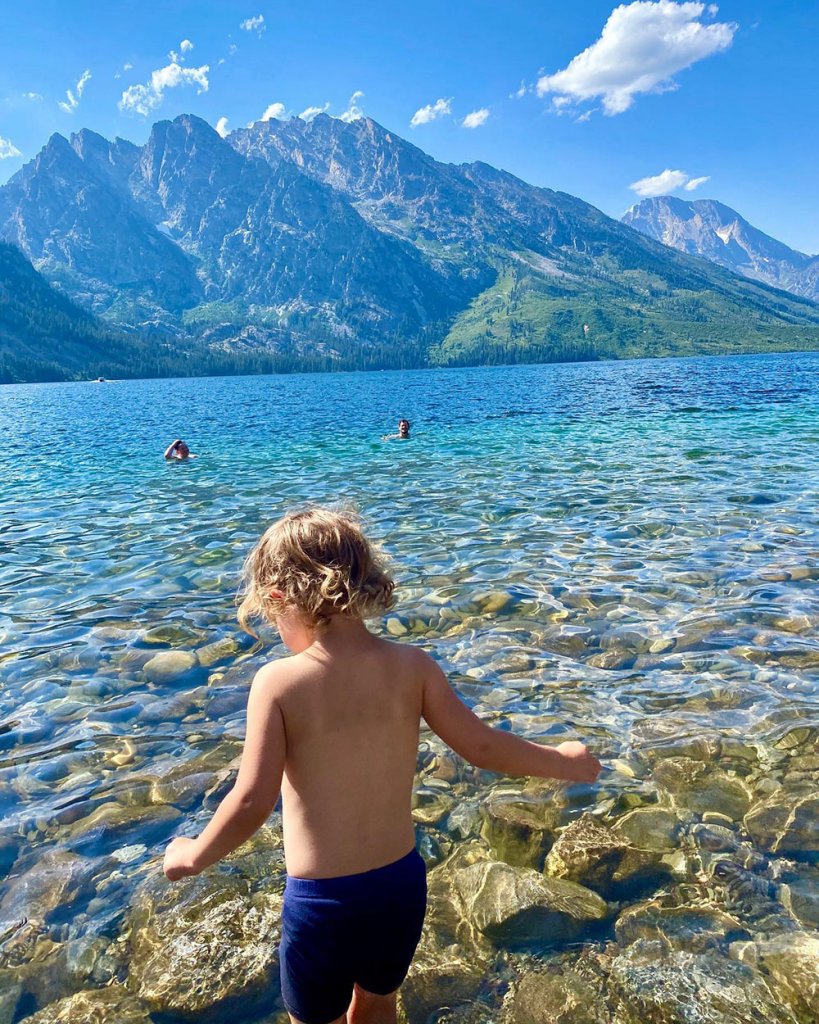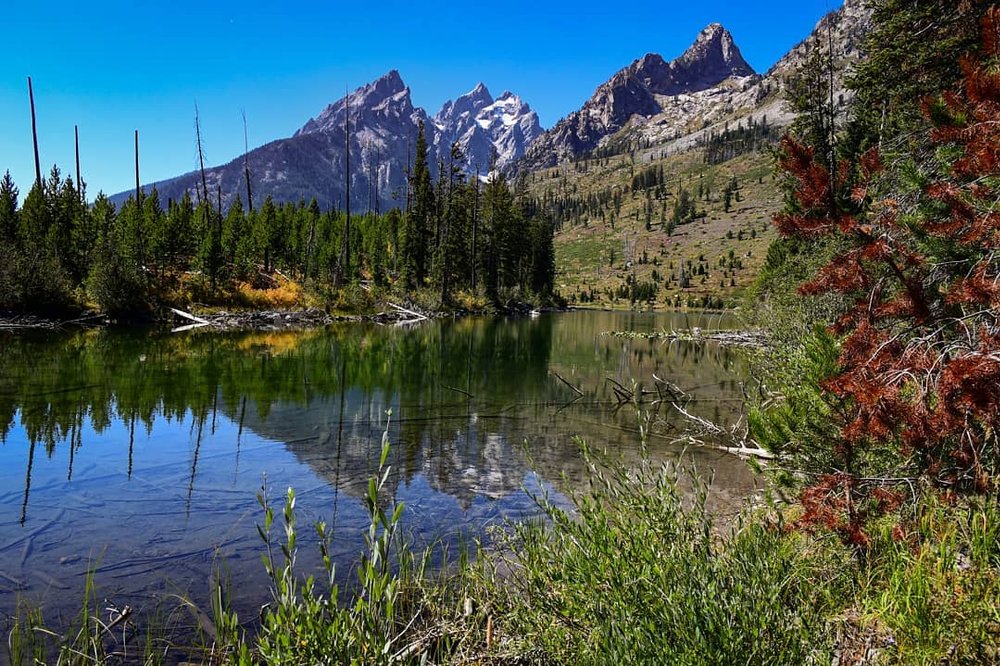In the heat of the summer, nothing is better than a swimming hole. Luckily, when you’re visiting Grand Teton and Yellowstone national parks, you’ll have some options. Whether you want to hop out of your car and swim or hike for miles to a backcountry destination, we’ve got you covered.
Swimming in Yellowstone National Park
Yellowstone National Park isn’t exactly known for its swimming holes. Due to the thermal activity in the park, most rivers and lakes in Yellowstone are closed to swimmers. However, if you’re up for an adventure, the park has opened up a few alluring areas to the public.
Note: The National Park Service has closed the Boiling River Swim Area until further notice due to COVID-19 public health guidelines.
Boiling River

The Boiling River is a gem in Yellowstone because it is the only road-side hot spring you can actually soak in. Steaming water from the Boiling River flows into the chilly Gardner River, swirling together to form the perfect temperature (if you can find it). If you swim here, you should be up for adventure. As you tromp through the chilly river water, you’ll encounter pockets of, well, boiling water. You may want to leave the kids at home for this one.
The Boiling River is an ideal winter destination; as you cozy up in the warm waters, a blanket of snow covers the landscape around you. Bison graze nearby, attracted by the warmth of the geothermal features.
You access the Boiling River right beyond the park boundary in Gardner, Montana. Parking is very limited. It is generally closed from late-April through June due to high water levels.
Mr. Bubbles

Deep in one of the most remote corners of the Yellowstone backcountry, a gurgling hot spring awaits backpackers who have made the journey. Situated in the Bechler River Canyon along the Ferris Fork, Mr. Bubbles gets its name from the pockets of air released by an underwater fumarole. And the surroundings are almost alien: travertine towers with streaks of green and orange — bacteria and algae — sit along the river’s edge. Backpackers travel 15 miles to reach this destination, but the entire trail is worth the trip. You’ll pass a backcountry geyser basin (Shoshone Basin), dazzling waterfalls and sweeping meadows where Sandhill cranes nest.
Swimming in Grand Teton National Park
Compared to Yellowstone, most of the lakes in Grand Teton National Park are open to swimming. Mirror-like alpine lakes offer stunning views of the mountain range, while chilly waters tempt you to take a dip.
Jackson Lake Swim Beach at Colter Bay Village

This beach is the perfect destination for the entire family, whether you want to swim, kayak or relax on the shore. From your beach chair, you’ll get panoramic views of the Teton Range. The lake temperature stays cold all summer long, but a quick swim feels great after a day of hiking. If the weather is too chilly to take a dip, you can rent kayaks and paddle south to the islands.
You can also swim in Jackson Lake along the shoreline near Signal Mountain Lodge.
Jenny Lake

Grab a spot along Jenny Lake to take in the crystal clear waters and stunning mountain backdrop. You may want inner tubes or a wet suit if you plan to swim, though!
Hit the Jenny Lake Loop Trail and walk however far you’d like before setting up a blanket along the lakeshore. Swimming is prohibited along the northwestern corner of the lake near the ferry.
String and Leigh Lakes

While most of the park’s waters stay icy-cold all year, String Lake warms up a bit because it is so shallow. This popular lake feels like a backcountry destination but only requires a short hike. Grab a spot near the String Lake Trailhead, or start at the Leigh Lake Trailhead and hike along the String Lake Trail to find a more secluded spot.
Leigh Lake attaches to String Lake and is only accessible on foot. It’s a great option for those looking to get some miles in and escape the crowds. However, it’s colder than String Lake.
Backcountry Alpine Lakes

If you want to hike and swim, you have an array of backcountry lakes to choose from. Taggart Lake, a 3.5-mile roundtrip hike, offers hikers spectacular views of the Grand Teton, Nez Perce, Mount Owen and Teewinot Mountain. This family-friendly hike is one of the most accessible backcountry lakes because the trail has very little elevation gain. Once you reach the lake, you can extend your hike by heading north to the more secluded Bradley Lake.
If you’re looking for a full-day excursion, look no further than the 14-mile hike to Holly Lake through Paintbrush Canyon. This alpine lake is the perfect day hike destination off of one of the most iconic backpacking trails in the park. If you want to brave the glacial waters, take a dip, but don’t swim too long. And make sure you bring along dry clothes; you still have a seven-mile hike back to the trailhead.
WY Responsibly: Alpine Lake Safety
Alpine lakes are fed from snow and glacier melt, so water temperatures stay cold year-round. You can easily get hypothermia from a lengthy swim, so remain cautious. Additionally, strong river currents can sweep away even a seasoned swimmer. For both of these reasons, the National Park Service recommends swimmers wear lifejackets.